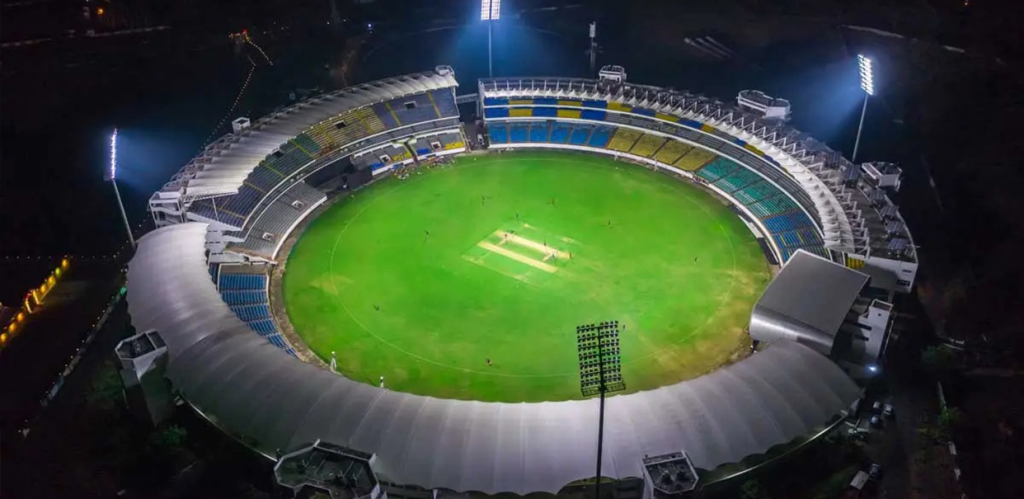A blog feed gains depth when real-time context behaves like a polite sidebar rather than a blinking banner. The aim is a small, learnable pattern: legible scores at a glance, a few stable cues that editors can quote accurately, and a closing routine that reconciles on one screen. With those pieces in place, posts carry timely angles while the room stays centered on people, not panels.
A Lightweight Sidebar That Respects Reading Flow
A quiet second screen starts with legibility. A dark theme with firm contrast preserves thin numerals under warm lamps, while a steady mid-high brightness keeps quick glances from turning into squints. Present strike rate, balls remaining, and wickets in hand within one sight line, because eye travel collapses when notifications stack. Put local time beside fixtures so late readers land without mental math. Relax auto-lock during overs to avoid wake taps that nudge the wrong control. When placements rarely move, the phone reads like an instrument, editors quote confidently, and the blog’s hero narrative stays in front.
Context tightens when captions reuse the same nouns the scoreboard already shows. Phase labels, review markers, and recap placement should match the reader’s screen, so a single glance carries meaning. For a neutral baseline that mirrors standard labels and cadence, open this website before the toss and let that layout anchor tonight’s terms. With one map agreed upfront, a post can reference “middle-over pressure building” or “review confirmed” without re-explaining icons, and readers cross from article to live pane as a continuation rather than a search.
Angle Blocks Readers Actually Use
Angle blocks earn their spot when they compress play into quotable states. Early overs are about air movement, seam length, and ring fields that either gift singles or choke them. Middle phases hinge on rotation quality against spin and whether clusters of dots nudge the chase into discomfort. Death overs compress judgment into seconds – yorker depth, slower-ball disguise, and rope protection around long-on or long-off tend to settle momentum more than raw pace. These cues translate into tight blog sentences that sit cleanly under a subhead without needing a dashboard explainer.
Micro-metrics That Travel in Excerpts
Small screens and fast feeds reward two compact metrics. Boundary interval – the number of balls between fours or sixes – shows whether gaps are being pierced or the ring is dictating contact. Dot-pressure share exposes where momentum leaks begin within a single matchup. Required run rate reads honestly only beside wickets in hand, because tolerance for risk shrinks late. Keep these labels adjacent to the score, then echo the same words in pull quotes, so, a glance becomes action without a second pass.
An Editorial Checklist That Scales
A short routine reduces friction for every writer touching the feed. Read it once before the first ball, then let it disappear until the break. The goal is fewer clarifications, fewer screenshots that age poorly, and captions that audit cleanly tomorrow.
- Lock contrast and a steady mid-high brightness for numeral clarity indoors.
- Pin boundary interval, dot-pressure share, and wickets in hand next to the score.
- Bookmark one live panel and one recap pane to avoid menu hunts at innings break.
- Keep previews muted, badges on, and mirror the board’s nouns to shorten scan time.
- Align photo habits to 50/60 Hz lighting to avoid banding on milestone frames.
Latency and Consistency Without Drama
Desynchronized clocks bend perception across devices and rooms. Treat the scoreboard as ground truth for state transitions, then pair each change with one corroborating cue – wickets in hand beside required rate, or boundary interval alongside current field spread. If broadcast and phone disagree for a beat, wait for reconciliation before posting. Quiet haptics for “over start,” “innings break,” and “result posted” keep rhythm without hijacking the thread. Consistent wording matters more than flourish, because repeatable nouns reduce copy edits and help readers find the same state on their phones in one glance.
Wrap-Up That Fits Tomorrow’s Publishing Cycle
Clean finishes protect the next day’s plan. Stop on posted checkpoints – innings break, a reached target, or a timer set during setup – instead of chasing one more sequence. Submit any final request inside limits and keep the reference line, then confirm that recap, ledger, and balance tell the same story on a single view. Save one context frame that teaches the next shift: the over where pace flipped, a field switch that cooled boundaries, or a partnership that altered strike rotation. Over a few nights, patterns surface – headings that travel, lamp angles that tame glare, and modules that readers actually tap – so blogangle.org posts retain a calm voice while live cricket supplies a clear, timely angle.
